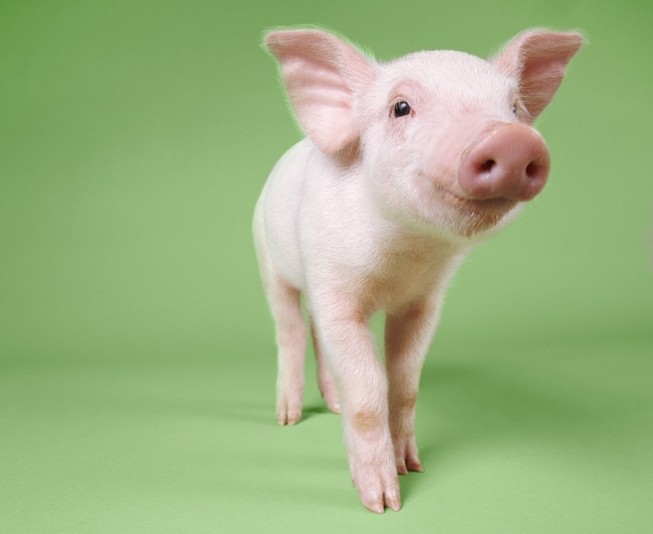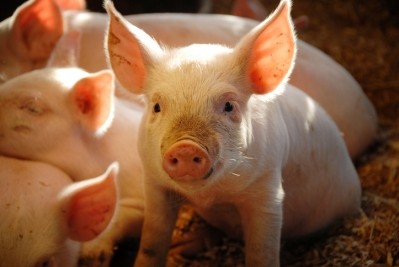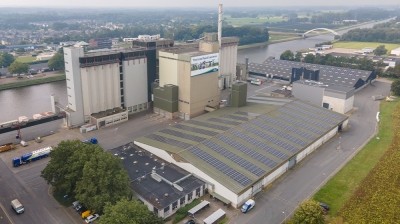Is nutrient kinetics the key to enhance piglet performance with lower production costs?

Kinetio, a patented technology under the NutriOpt brand of Trouw Nutrition, the animal nutrition division of Nutreco, has been co-developed with Dutch feed compounder, ForFarmers; it is aimed at optimizing the digestion of nutrients in young pigs.
“Kinetio gives us a better understanding of feed ingredients, allowing us to use inputs not typically used in piglet diets, which can result in reduced feed costs,” said Peter Ramaekers, application and solution specialist swine, Trouw Nutrition.
The technology is currently being used in the company’s Milkiwean product range - the concept behind it is that nutrient absorption and delivery can be improved by considering the speed at which different ingredients in the piglet’s diet are digested.
It uses degradation kinetics to analyze insoluble and soluble dietary protein, starch and fiber in the feedstuffs. This information is then used to provide nutritional recommendations and formulate a piglet diet that supports optimal pre-digestion in the stomach, maximizes nutrient absorption in the small intestine and ensures a low amount of undigested protein in the large intestine.
Looking at the nutrient kinetics, Ramaekers said diets can be adjusted and optimized for optimal animal performance during challenging times, while, in healthy animals, the technology gives better margins for the business and reduces the need for antibiotics.
The starting point
The swine nutrition specialist, along with Neil Jaworski, global nutritionist database and matrix, at Trouw Nutrition, talked to us about the evolution of the formulation tool.
They, along with others at Trouw Nutrition, and experts at Wageningen University, started this journey over five years ago.
One trigger for the development of the concept was the need to control post-weaning diarrhea given that the industry was under pressure to reduce antibiotic, copper and zinc oxide inclusion levels in piglet diets.
But they also wanted to determine what gaps remained in terms of feed ingredient evaluation work, beyond assessment of the ileal digestibility of amino acids (AAs) or the prediction of total tract energy digestibility, and they eventually realized a key part that was missing was the digestion rate of ingredients, that is how fast or how slow the digestion of AAs or protein or other nutrients is.
Trial work
The validation process involved in the development of Kinetio comprised both proof of concept in-vitro studies in the lab and in vivo trials, including commercial scale farm studies, explained the experts.
Trial results indicated that applying formulation based on this technology in stressful situations like weaning results in 25% reduction in diarrhea, and 4% improvement in body weight, they said.
In non-challenged situations, piglets fed balanced diets, formulated with Kinetio, were 0.8 kg heavier at the end of the nursery period and the farms’ margin over feed cost was increased by 3.5%, they added.
Challenging foregone conclusions
The company can use all feedstuffs much more effectively now because of the insights gleaned about their nutrient digestion kinetics, said Jaworski.
But some raw materials will prove more favorable than others, he explained.
“We actually see that sunflower seed meal is quite attractive for piglet diets, along with wheat gluten meal, blood plasma and soybean meal, in addition to cereals such as wheat, barley and rye.”
Some of the data generated by Kinetio are surprising, though, in that they indicate that corn, rapeseed meal, fishmeal, potato protein concentrate, and soybean protein concentrate (SPC), ingredients typically earmarked for use in piglet diets, can be less than ideal, based on the speed of their digestion in the piglet, said Jaworski.
“We investigated why this might be the case, and we saw that it is a result of what is happening in the piglet’s stomach.”
The team learnt that when the environment is not optimal for piglets, such as around weaning, when the young animals face multiple stressors including an abrupt switching to solid feed from sow milk, and placement in group housing, the conditions in the gastrointestinal tract (GIT) are less favorable for digestion.
The piglet, as it is stressed, will increase passage rate, reducing the time available to digest the protein sources in those feed ingredients.
The poorly digested nutrients stay longer in the digestive tract of the animal and spur overgrowth of potential pathogenic bacteria in the large intestine. This in turn can lead to diarrhea, performance losses and mortality.
“If that is our challenge, then we need protein sources that are rapidly digested, in the stomach, and in the presence of those stress-induced conditions in the GIT.”
Mimicking the piglet’s GIT
Using the Kinetio technology, the team has been simulating stressed piglet GIT conditions in an in vitro model. “It involves a six hour incubation process, whereby we simulate the digestion in the stomach and also the small intestine of the piglet. We adjust pH and enzyme concentration to mimic that, and over the six hours, we take samples and we measure how much protein, starch, and fiber has been digested or fermented in that system to get the digestion kinetics.”
They also work closely with key stakeholders, commercial nutritionists at compound feed players like ForFarmers and Nanta, to determine what the most beneficial ingredients might be.
“Those nutritionists really challenged us on the science, they wanted to fully understand why the Kinetio metrics were showing that SPC, always perceived as a great protein source, and one that was highly digestible, was proving otherwise," said Jaworski.
The team, he said, investigated various SPCs, how they behaved in the Kinetio system, taking account of the processing technologies used to manufacture them, as well as how their findings differed from all other SPC research done to date, and a raft of other parameters. “There was a lot of teeth pulling, but we learned together, and I think that was key, this co-development approach.”
But the end goal of the Kinetio technology is not about discrimination against certain feed raw materials. "What is important is that we set a formulation objective, whether that is gut health or feed efficiency, and we rely on the nutrient kinetics system to select which feed ingredients are optimal in that respect,” explained Ramaekers.
Extensive database
Trouw Nutrition now has database of 200 ingredients that have been analyzed based on their nutrient digestion kinetics along with formulation recommendations for piglet diets.
Ultimately, the aim is to create feed formulations for piglets based on rapidly digestible nutrients and to have balanced fiber fermentation kinetics to ensure no post-weaning diarrhea and robust gut health in the young animals.
The company is planning to expand the application of the Kinetio technology in more countries.















